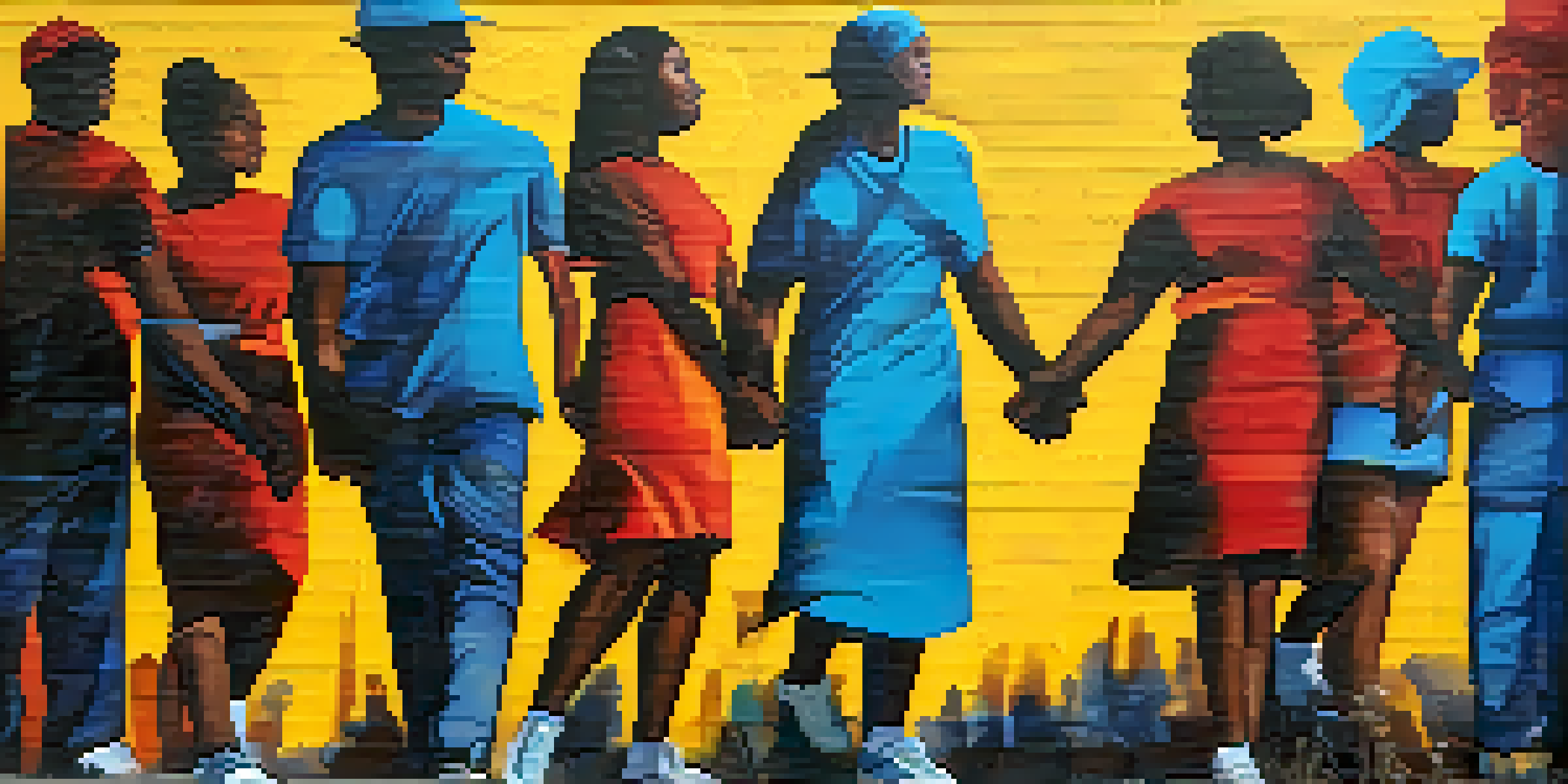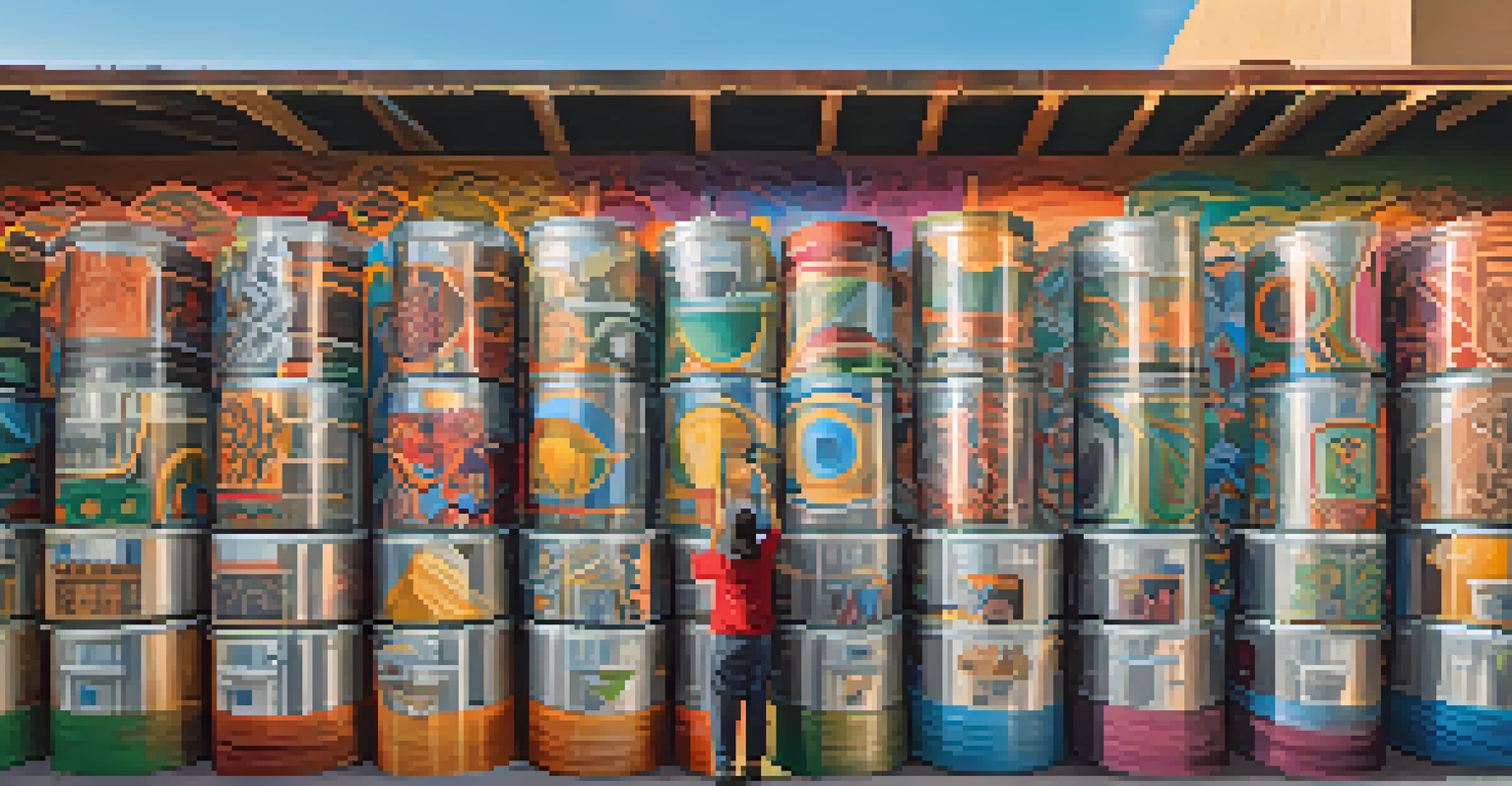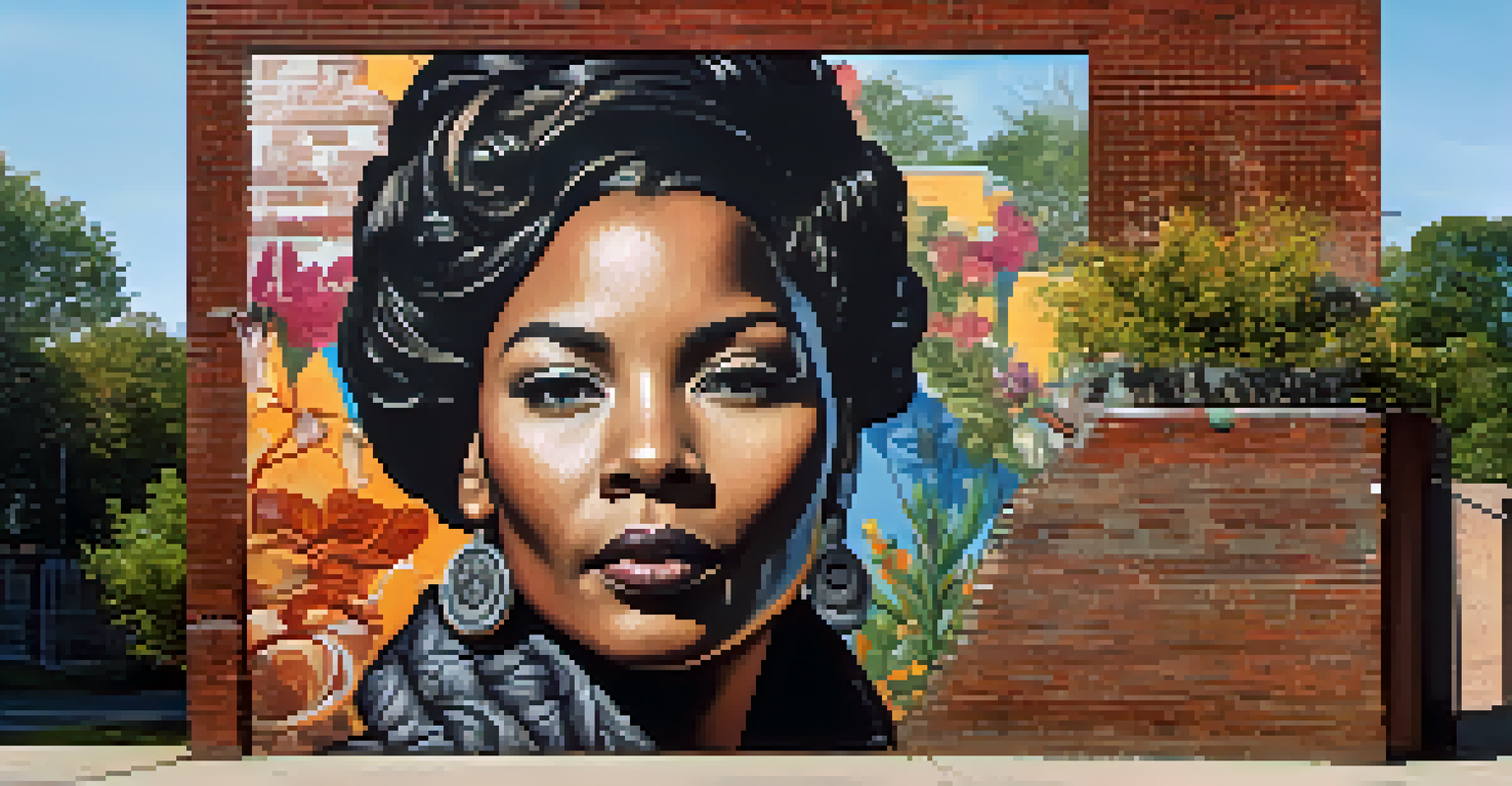Street Art: Voices of the People and Human Experience

The Origins of Street Art: A Cultural Movement
Street art has roots in various cultural movements, emerging as a form of expression for marginalized voices. Originating from graffiti in the late 20th century, it evolved into a vibrant art form that conveys messages about social issues, identity, and community. Artists began to transform urban spaces into galleries, turning concrete walls into canvases for their thoughts and experiences.
Street art is a reflection of the community's heart and soul, telling its stories and struggles in vibrant colors.
This transition from vandalism to recognized art reflects a broader societal acceptance of diverse narratives. Street art serves as a visual diary of a community, capturing the essence of its struggles and triumphs. By showcasing personal and collective stories, it fosters a sense of belonging and understanding among viewers.
As we delve into the world of street art, we uncover the layers of meaning behind each piece. Whether it's a mural addressing social justice or a simple tag, every stroke speaks to the human experience. This art form invites us to engage with the world around us, encouraging dialogue and reflection.
Street Art as a Voice for Social Justice
One of the most powerful aspects of street art is its ability to amplify voices for social justice. Artists often use their work to comment on issues such as inequality, racism, and environmental concerns. By placing these messages in public spaces, they reach a wider audience, making the art not just visual but also a catalyst for change.

For instance, murals depicting historical figures who fought for civil rights can inspire and educate passersby. These images serve as reminders of the ongoing struggle for equality, urging communities to continue the fight. Street art transforms walls into platforms for advocacy, encouraging conversations that might otherwise remain in the shadows.
Street Art as Social Commentary
Street art serves as a powerful medium for artists to address social justice issues, fostering dialogue and awareness in public spaces.
Moreover, the ephemeral nature of street art adds to its urgency and impact. Unlike traditional gallery art, which can be confined to elitist spaces, street art is accessible to everyone. It invites people from all walks of life to reflect on the pressing issues of our time and to consider their role in creating a more just society.
A Reflection of Community Identity and Pride
Street art is often a mirror reflecting the identity of a community. Artists draw inspiration from their surroundings, incorporating local culture, history, and personal experiences into their work. This connection between the artist and the community fosters a sense of pride and ownership over public spaces.
Art should comfort the disturbed and disturb the comfortable.
For example, vibrant murals celebrating cultural heritage can reinvigorate neighborhoods, attracting visitors and instilling a sense of pride among residents. These artworks become landmarks of community identity, telling stories that resonate with local history and traditions. They remind us that art is not just for the elite; it belongs to everyone.
In this way, street art not only beautifies urban landscapes but also strengthens community bonds. It encourages collaboration among artists, residents, and local organizations. By working together to create art that represents their shared experiences, communities can foster a deeper understanding and appreciation of their unique narratives.
The Role of Technology in Street Art's Evolution
Technology has played a significant role in the evolution of street art, providing new tools and platforms for artists to express themselves. Social media, for instance, allows artists to share their work with a global audience, transcending geographical boundaries. This exposure can lead to collaborations and inspiration from artists worldwide.
Additionally, advancements in spray paint and stencils have enabled artists to experiment with techniques and styles. Digital tools also offer new avenues for creativity, allowing artists to design pieces that can be projected onto buildings or shared in virtual galleries. This fusion of technology and art expands the possibilities for expression and engagement.
Community Identity Through Art
Street art reflects and celebrates community identity, strengthening local pride and ownership of public spaces.
However, this digital age also brings challenges, such as the commodification of street art. While exposure can benefit artists, it can also lead to the dilution of the original message. The challenge lies in maintaining the authenticity of street art while embracing technological advancements that can enhance its reach and impact.
Street Art as a Tool for Community Engagement
Street art has emerged as a powerful tool for community engagement, fostering dialogue and participation among residents. Many artists collaborate with local organizations to create murals that reflect community values and aspirations. This collaborative approach ensures that the art resonates with the people it represents.
Workshops and community events surrounding street art initiatives encourage residents to share their stories and ideas. This inclusivity empowers individuals to take an active role in shaping their environment. By involving the community in the artistic process, street art becomes a collective expression rather than just the vision of a single artist.
Furthermore, street art can spark conversations about important issues affecting the community. It creates a space for dialogue where individuals can express their thoughts and feelings. This engagement not only beautifies public spaces but also cultivates a sense of ownership and pride in the community.
Challenges Facing Street Artists Today
Despite its growing recognition, street art faces numerous challenges in today's society. Legal issues around vandalism and property rights often put artists at risk of fines or arrest. This creates a constant tension between the desire to express oneself and the potential consequences of doing so in public spaces.
Additionally, the commercialization of street art can dilute its original message. As more businesses commission murals for branding purposes, some artists feel their work is being co-opted for profit rather than genuine community expression. This shift raises questions about the authenticity and intent behind street art.
Tech's Impact on Street Art
Advancements in technology are reshaping street art, offering new tools for expression while also posing challenges related to authenticity.
Moreover, the rise of gentrification in urban areas threatens the very spaces that street art occupies. As neighborhoods transform, many murals are painted over or removed, erasing the stories they tell. This cycle of change highlights the need for ongoing support for street artists and the preservation of their work as part of the urban landscape.
The Future of Street Art: Trends and Innovations
The future of street art is bright and full of potential as artists continue to push boundaries and explore new mediums. Innovations such as augmented reality (AR) are transforming how viewers interact with street art, allowing them to experience layers of meaning through digital enhancements. This blend of physical and digital art creates an immersive experience that captivates audiences.
Furthermore, the rise of environmental art highlights the growing awareness of sustainability among artists. Many are using eco-friendly materials and techniques to create works that address climate change and conservation. This focus on environmental themes not only beautifies urban spaces but also educates the public about pressing global issues.

As street art evolves, it will remain a powerful voice for communities. By embracing new technologies and addressing contemporary challenges, street artists will continue to inspire and engage audiences worldwide. The future of street art is not just about aesthetics; it's about creating meaningful connections and fostering social change.